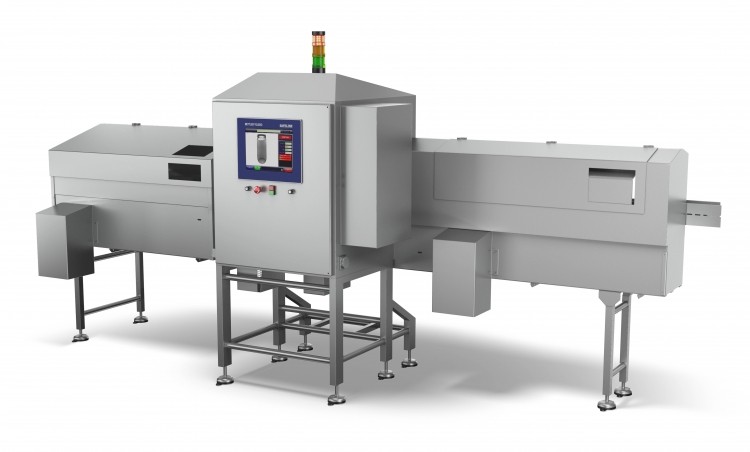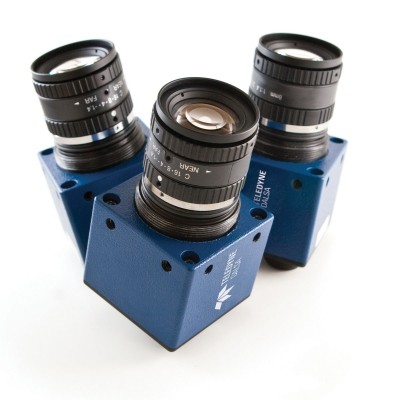Inside information

Right product, wrong box. The mistake behind a vast majority of recalls, according to Tony Hines, head of food security and crisis management at research consultancy Leatherhead Food Research (LFR).
"We see the same problem emerging ," says Hines. "Not listing sulphites on a label – or milk, or nuts. It's quite simple but manufacturers make the same mistakes time and time again."
Labelling issues were also at the root of the recent horsegate scandal, according to inspection specialist Mettler Toledo.
Neil Giles, marketing communications manager for Mettler Toledo's Product Inspection Division, says: "It is important to point out that horsegate was due to incorrectly labelled products and the inability to trace product sources – not product contamination."
Some say manufacturers are rushing under too much pressure to meet deadlines. Others blame pressure from retailers to cut costs or rising commodity prices. But no matter how much pressure they are under, they will have to put supply chain control high on their action plans if they want to regain consumer trust.
Andrew Rhodes, director of operations at the Food Standards Agency (FSA), said: "We need to get back to the basics of understanding where products come from. Companies should be taking steps to think about the risks instead of focusing on commercial pressure."
So what can manufacturers do to satisfy consumers' desire for more provenance and guarantee a brand promise of superior quality?
System sharing
More transparency, information sharing and greater integration of systems are key to moving forward, according to Richard Werran, md of Cert ID Europe. He claims manufacturers are reluctant to share information and industry is scared of greater integration.
"There's always a competitive edge, which brings a dimension of food manufacturers wanting to keep their know-how to themselves," says Werran. "It's a protective measure, but this is a watershed event, which demonstrates an overwhelming need to serve consumers. When you've got transparency you can rebuild trust."
Integrating systems becomes more difficult as the supply chain becomes more complex. Fresh food manufacturers might only need to monitor one or two stages back in the chain while ready meals manufacturers are faced with ingredients suppliers from several sectors – and possibly countries – which makes keeping track of the entire chain an entirely different challenge.
Global sourcing of ingredients is rising, which is putting firms at the mercy of unknown quality control and certification processes.
That's why LFR has been working with the Food and Environment Research Agency to develop an online tool to help food importers, processors, manufacturers and retailers attain a rapid overview of global potential and emerging food safety issues.
Horizon Scan is a subscription service that enables its users to access recall, alert and food safety information about ingredients at a global level on a daily basis.
Users can view hazard and risk assessments across all food commodities from around the world. Food safety issues covered include microbial contaminants, residues of veterinary drugs, pesticides, mycotoxins, allergens, heavy metals, dioxins and others. Reports from major food importing countries are monitored.
"If you're a meat importer, for example, you can use the tool to check the risk of finding residue of veterinary residues in meat before you buy," says Hines. "Because if you're offered something that sounds too good to be true, then it probably is."
But it's not just about controlling the sourcing, it's about controlling the process as well.
Mettler Toledo suggests a three-point product inspection plan: use hazard analysis critical control points to identify the most likely form of contamination and the most appropriate technology; understand the food standards and ensure your firm's technology is compliant and well maintained; and train staff to increase their risk awareness.
Giles says: "Manufacturers should determine where on the line products must be inspected and the type of possible contaminants. For example, to detect glass fragments in liquids packaged in domed-base containers, manufacturers should use an X-ray system with specially angled beams to eliminate the effects of inspection blind spots, placed at the end of the production line."
Giles also advises manufacturers to check their inspection systems regularly with test pieces containing sample contaminants – particularly ferrous and non-ferrous metal and stainless steel. He recommends that X-ray inspection tests should also include soda lime glass, plastics and rubber where a risk of contamination from these materials has been identified. Testing should involve passing test packs repeatedly through the machine aperture to ensure the pre-determined sensitivity levels are being maintained. Ideally, the test samples should be of a variety of sizes and materials to guarantee the inspection system offers comprehensive foreign body detection.
Drawing up an action plan to manage your company's quality control and compliance is one thing: knowing the quality and integrity of your suppliers' products is another matter altogether.
To minimise risk, information on suppliers' levels of compliance, audit/test type, results and frequency needs to be managed on a daily basis, which is a mammoth task.
Adrian Talbot, senior account manager at software supplier Muddy Boots, says: "Traditional paper-based systems provide a disjointed approach, particularly for companies with complex and globalised supply chains and mean there's a heavy reliance on trust that your suppliers will behave the way you expect them to."
The company has just launched a web-based supply chain system that enables food manufacturers and their suppliers to access, record, search and share information on quality assurance and compliance of supply chain members. Greenlight Supplier Approval connects suppliers on a single, secure platform.
Talbot says: "With complete visibility of your supplier approval status in real-time, you and your supply chain members have easy access to the information that tells you this product has come from a reliable, approved source and that all of the correct certificates, documentation and audit/test results are in place.
"And, because the system is constantly validating the data and sending alerts and notifications to all stakeholders, users are able to manage by exception, so it's only when the software detects a problem that you're prompted to take any action."
At least part of the cost of implementing such a system can be passed on to customers as it enables manufacturers to charge a premium price for their product, according to software supplier Infor. The company recently brought out an upgraded version of its M3 Graphical Lot Tracker tool to help food manufacturers create a database for supply chain visibility from raw materials to finished product.
Patrik Sjöberg, product director, M3 Product Management, Infor, says: "Retailers in France have used our system to show their customers the trace line of their ingredients. This trust means they can charge a better price."
Even if installing a new system doesn't enable the firm to charge a higher price for a product, it can be a good point of negotiation with a retailer.
Austrian cereal processor Bioquelle says the fact that it recently installed an Ishida X-ray system goes down well with its customers.
"Consumer safety is paramount," says Bioquelle md Claudia Schrems. "Of course, we tell our retail partners of our high safety standards, which provide a powerful argument in selling situations."
And retailers are going to hold an increasingly tighter grip on the supply chain in future.
Werran says: "Retailers need to drill down even further through the supply chain to get the knowledge of what goes on at field level. They have the justification they need to do that now."
Tighter regulation
He predicts tighter regulation via the next British Retail Consortium (BRC) Global Standard for third-party auditing and certification.
Werran says: "I expect the lessons being learned will find their way into a better version of the next BRC Standard. It's very good as it is but the audit wouldn't necessarily have picked up the horsemeat issue. Clearly, there are some areas within those standards that need to be looked at and tightened up. It will be interesting to see what the next BRC – version 7 – will be."
He's not the only one predicting changes to the way the food supply chain is assessed by both private and public sector inspectors.
Mettler Toledo's Giles believes coordination between international regulatory bodies will be improved, as most brand owners come to depend heavily on outsourced manufacturing and international sales.
He says: "The horsegate scandal will impact safety regulations. Food regulations will potentially strengthen even further, to possibly be more closely aligned with those used for the pharmaceutical industry. In addition, regulatory bodies may look to further standardise initiatives globally to ensure uniform food safety to consumers worldwide. Potentially, the development of a centralised logistics and sourcing database could help to streamline the supply chain – however, this will need a central food safety association to take this on and it is not clear who that would be at this time."
Add to this the European Commission's recently announced plan to standardise food safety regulation controls across the EU and it's clear extra work is in the pipeline for manufacturers. Not to mention additional bills.




















